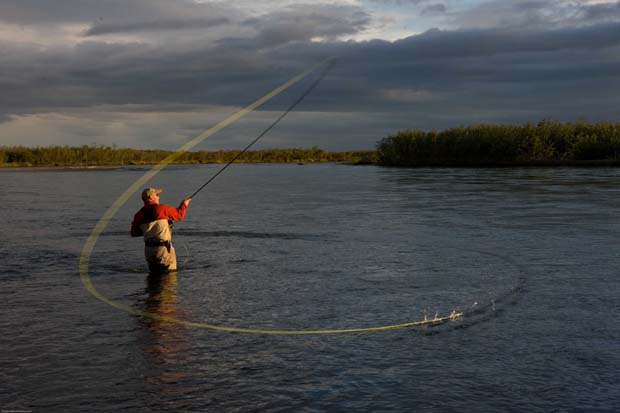As a recent convert to switch rod fly fishing, I’ve assumed the zeal that goes along with such conversions
[dropcap]T[/dropcap]he aspects of switch “rodding” that appeal are less physical effort (wear and tear on arm, shoulder, and wrist, as well as overall fatigue), longer casts, no concern about what’s behind me, and, yes, I can single-hand cast if need be (surf). And no false cast required which equals much, much more fly in the water time. Fish don’t bite false casts, or on flies stuck in a tree or bush.
Revisiting single-handed fly casting
Knowing one spey casting technique allows for an application that can be applied to single-handed casting. The benefits of which are equivalent to the aforementioned. The exception, increased distance.

Using the flyline to both anchor and then load the rod. No back cast required. More fly time in the water. Image Northwest Speycasting.
In this video, casting instructor Jeff Putnam makes the transition from conventional overhead casting with a single-handed stroke to a more beneficial (no back-cast) spey stroke, using the flyline in the water to load your rod. It’s pretty easy.
[youtube id=”tExLzEAohcg” width=”620″ height=”360″]


